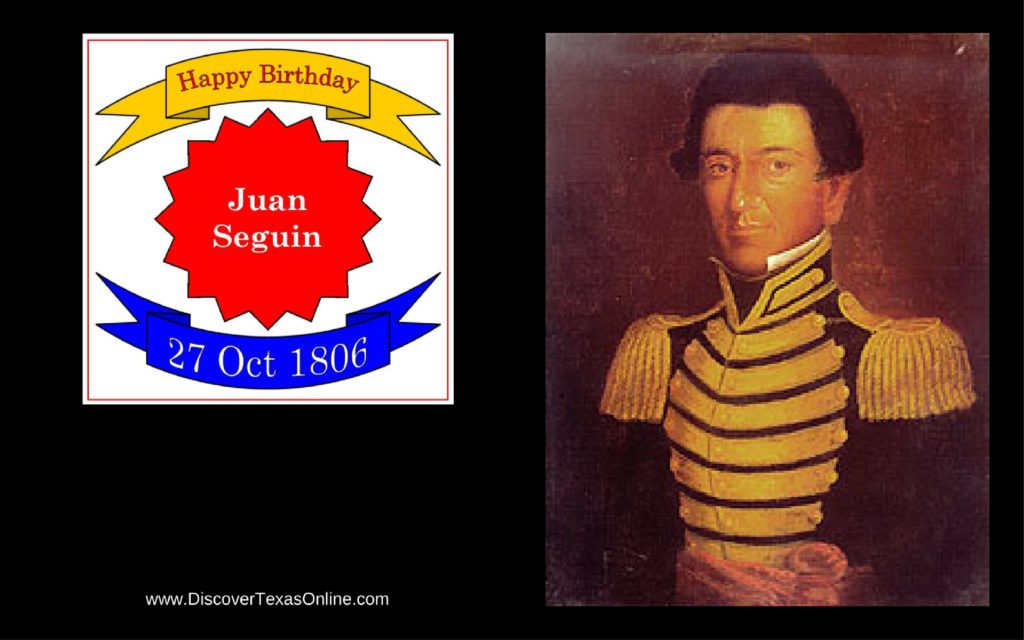 Juan Seguin is a Texas hero who tugs at my heart strings.
Juan Seguin is a Texas hero who tugs at my heart strings.
Born in San Antonio on October 27, 1806, Seguin was an Hispanic Texian who made huge personal sacrifices for the Texas Revolution that resulted in independence.
Public service was a family tradition. His father was a postmaster. He was elected to serve in the Mexican Congress when Juan was 17, so Juan took his place helping his mother run the post office. At 22, Juan was elected to serve as alderman of San Antonio, and at 27 he was elected to serve as alcalde (mayor). But as the Mexican government became more and more Centralist, Juan Seguin began to fight for independence. When the smoke settled after the first stand in Gonzales, Stephen F. Austin commissioned Seguin as a captain, and Seguin promptly raised a company of 37 men. They participated in the assault of General Martin Perfecto de Cos at the Siege of Bexar in December 1835, and Seguin was prepared to defend the Alamo when Santa Anna arrived. Instead, Travis sent him out as a courier with his legendary letter promising never to surrender or retreat. (I have sometimes wondered if Seguin was chosen because he was Hispanic and would be able to blend more easily with the crowd to cross enemy lines.) After delivering the letter to Gonzales, Juan Seguin doubled back to return to San Antonio, intending to re-enter the Alamo, but he found it had already fallen. Instead he organized a company of Tejanos who followed Sam Houston’s army to San Jacinto. (Again because he and his company could easily be confused with the enemy, they wore playing cards in their hats to keep from being shot by “friendly fire.”) After observing the Mexican army’s defeat and retreat, Seguin returned to San Antonio to accept the Mexican surrender, direct the burial of those who died at the Alamo (several months after their death!), and serve as the city’s military commander. He resigned his commission in 1837 when he was elected to serve as part of the Texas Senate as its only Tejano member. He served as a Senator until 1840.
Re-elected as mayor of San Antonio, he found himself caught in the hard feelings between Anglo and Hispanic Texans and became a victim of suspicion from both sides. Afraid for the safety of his family, he resigned as mayor in 1842 and fled with his wife and ten children to Mexico, but his heart remained true to Texas. He returned a decade or so later to Texas and to public service.
The town of Seguin, north-east of San Antonio, is named in his honor.



